Habr dying?
I love writing in explanation of the projects that I do. Last year I posted on habré more than 20 posts. I was constantly surprised by how little sensible review been able to. Views are many and reviews are few and the majority is not the case. Recently I've started to notice bumping into old posts for 2012, 2013 years, which they discuss, like, more meaningful. Decided to test this quantitatively. Downloaded info on all stations in all years and built a few simple graphs. What I saw surprised me and even a little scared. Decided to post observations here to check whether I draw conclusions and do all taken into account.
For all published on Habre posts I have collected dates of publications, number of views, number of likes and dislikes, the number of stars and reviews, a list of hubs and the names of company blogs. In the course of pumping learned that the number of plus sign and minus can be fractional or even negative, the post can be published in blogs of several companies and may you don't have the author. If anything, the table can be downloaded from the repository: github.com/alexanderkuk/analyze-habr/blob/master/data/posts.csv

The first thing I looked at how varied the total number of posts over time. It stopped growing in 2013 and drop slightly from 2014, which is a little disturbing:
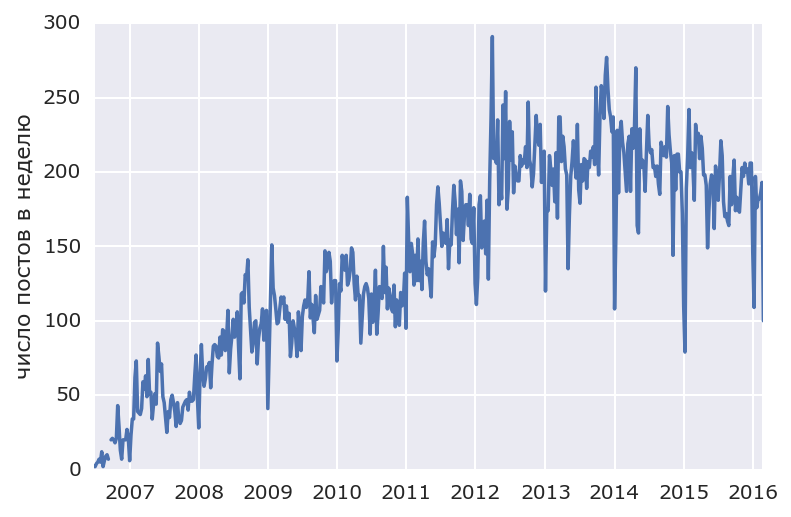
Then I built the same chart for the total number of views and got scared. In 2014, it fell by 3.5 times:
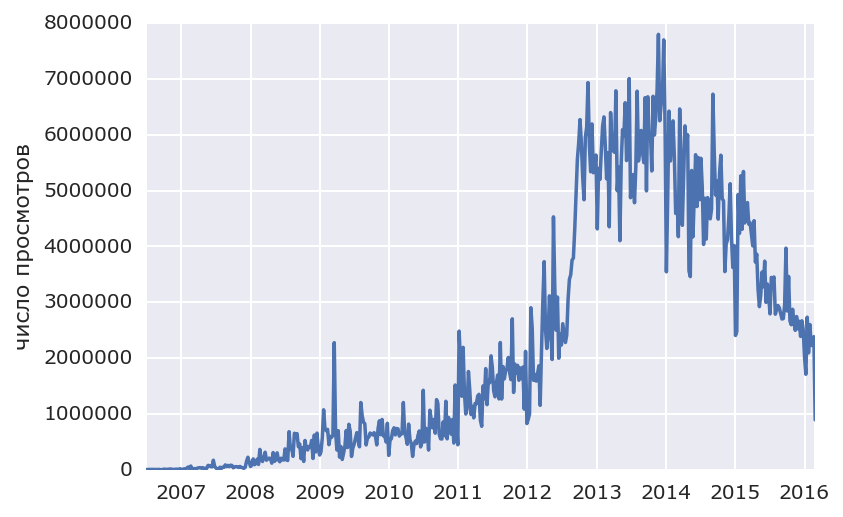
This is a serious allegation, so I decided to consult Similarweb.
They only provide estimates, but in 2014, the 2015 trend is also clearly negative:
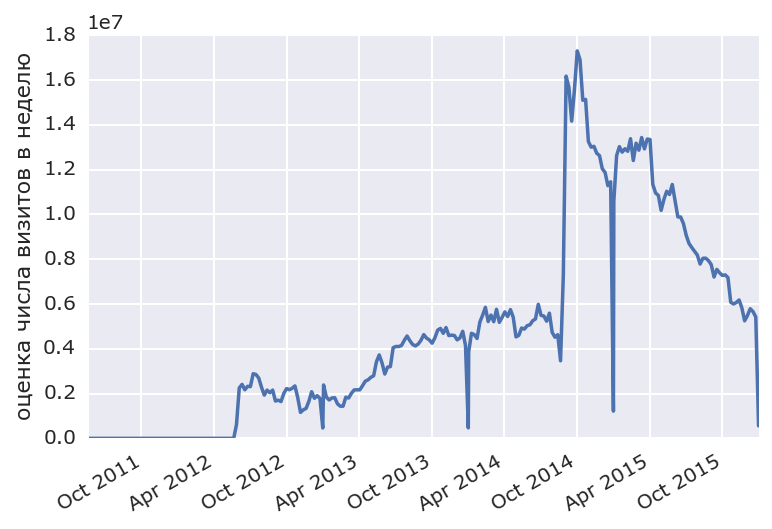
The ratio of comments to number of views in time looks interesting. Since 2008 it is falling, and in mid-2012 step almost disappears.
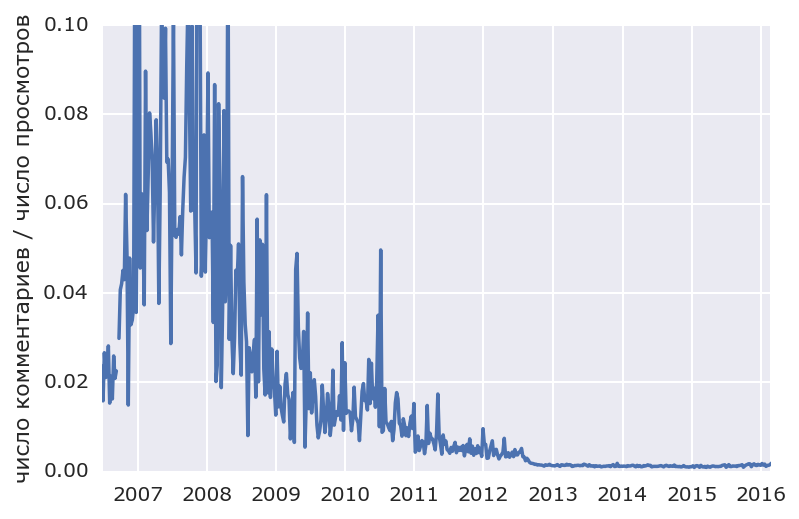
Share likes behaves:
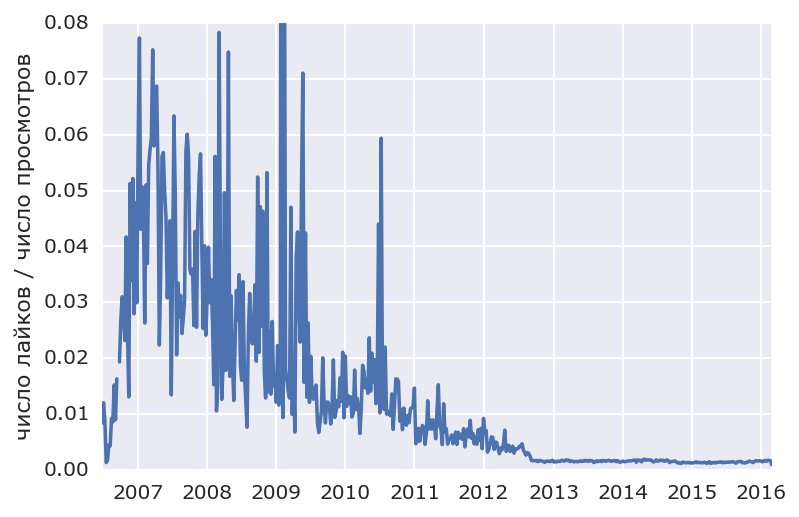
By the way the ratio of likes and dislikes almost unchanged. Cons are always about 25% of the benefits:
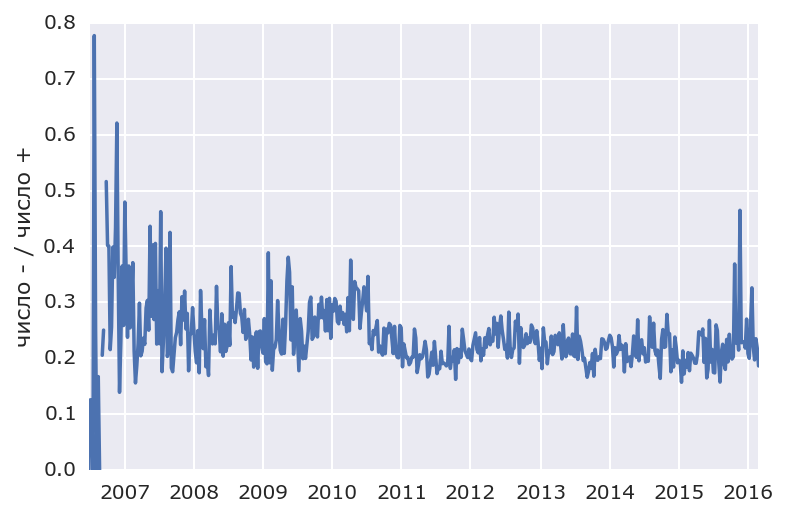
The proportion of stars behaves interestingly. Somehow in recent times growing slowly. Why so?

In short, in the middle of 2012 something happened. Maybe someone knows the answer from history? I then Abram is not used and therefore try to find the answer in the data.
First, notice that the step has changed, the average number of hubs, which are simultaneously housed the posts. Apparently, they raised the limits?
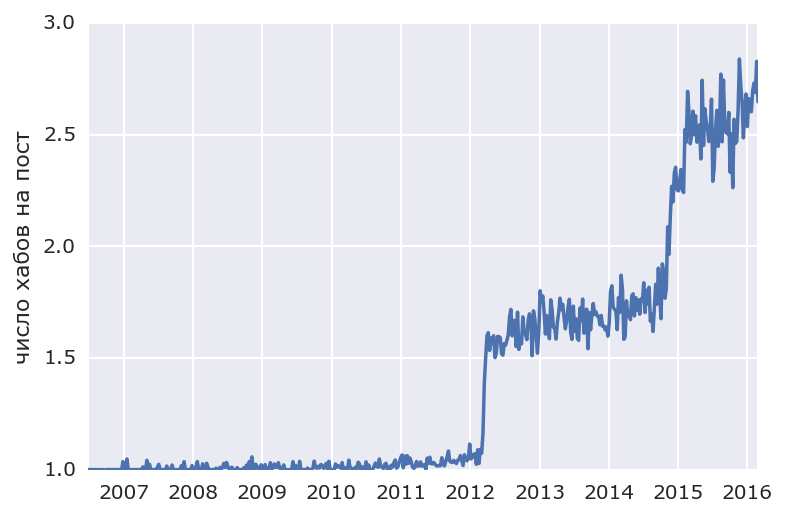
Second, more importantly, there were blogs companies:
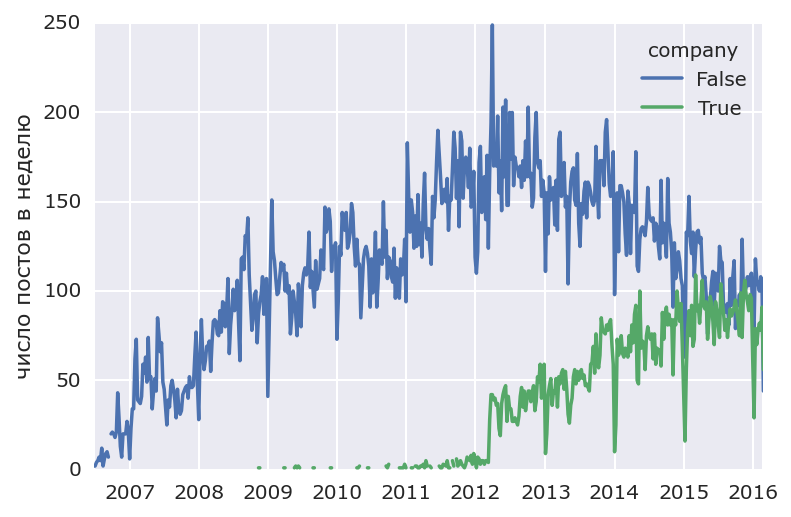
Is that they had such a huge impact?
By the way, the number of views at the positions of the companies, which all the time slowly growing, recently also falls. This is the most frightening:
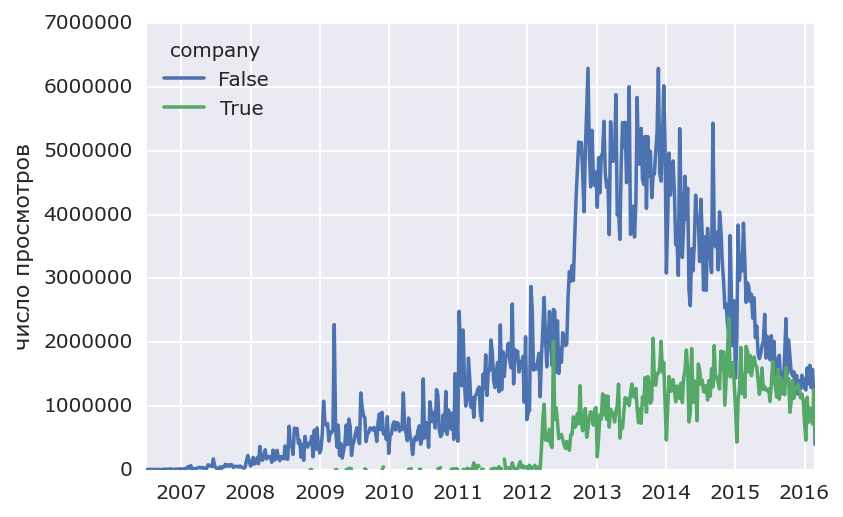
Share of likes, stars and comments from regular posts and the posts of companies are almost identical. This is also unexpected, I thought commercial posts worse take:

I also thought that maybe the situation is worse in the hubs that you write, and other fine comment. Yes, indeed, big data and data mining of comments smaller, but only slightly.
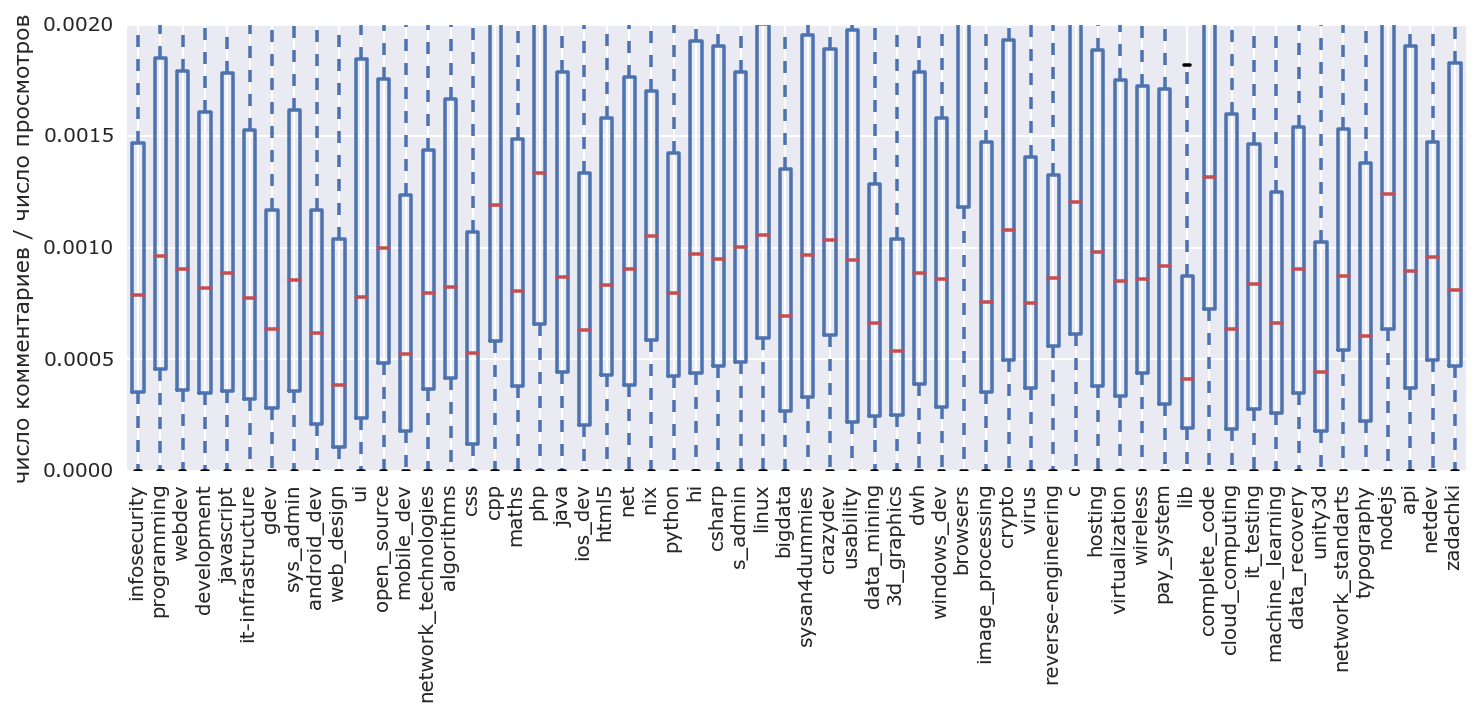
In short, really, so bad?
If anything, all the calculations in the repository github.com/alexanderkuk/analyze-habr/blob/master/notes.ipynb
Update: all graphics, which featured a number of hits prior to 2012 wrong. See habrahabr.ru/post/278325/#comment_8788985
Article based on information from habrahabr.ru
For all published on Habre posts I have collected dates of publications, number of views, number of likes and dislikes, the number of stars and reviews, a list of hubs and the names of company blogs. In the course of pumping learned that the number of plus sign and minus can be fractional or even negative, the post can be published in blogs of several companies and may you don't have the author. If anything, the table can be downloaded from the repository: github.com/alexanderkuk/analyze-habr/blob/master/data/posts.csv
The first thing I looked at how varied the total number of posts over time. It stopped growing in 2013 and drop slightly from 2014, which is a little disturbing:
Then I built the same chart for the total number of views and got scared. In 2014, it fell by 3.5 times:
This is a serious allegation, so I decided to consult Similarweb.
They only provide estimates, but in 2014, the 2015 trend is also clearly negative:
The ratio of comments to number of views in time looks interesting. Since 2008 it is falling, and in mid-2012 step almost disappears.
Share likes behaves:
By the way the ratio of likes and dislikes almost unchanged. Cons are always about 25% of the benefits:
The proportion of stars behaves interestingly. Somehow in recent times growing slowly. Why so?
In short, in the middle of 2012 something happened. Maybe someone knows the answer from history? I then Abram is not used and therefore try to find the answer in the data.
First, notice that the step has changed, the average number of hubs, which are simultaneously housed the posts. Apparently, they raised the limits?
Second, more importantly, there were blogs companies:
Is that they had such a huge impact?
By the way, the number of views at the positions of the companies, which all the time slowly growing, recently also falls. This is the most frightening:
Share of likes, stars and comments from regular posts and the posts of companies are almost identical. This is also unexpected, I thought commercial posts worse take:
I also thought that maybe the situation is worse in the hubs that you write, and other fine comment. Yes, indeed, big data and data mining of comments smaller, but only slightly.
In short, really, so bad?
If anything, all the calculations in the repository github.com/alexanderkuk/analyze-habr/blob/master/notes.ipynb
Update: all graphics, which featured a number of hits prior to 2012 wrong. See habrahabr.ru/post/278325/#comment_8788985
Комментарии
Отправить комментарий